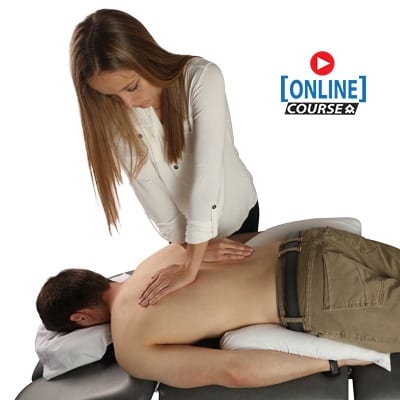A Practical Guide to Treating Thoracic Outlet Syndrome
Course Description
3.88 Hours / .388 CEUs
Gain the knowledge and skills to provide treatment for patients with disputed neurogenic thoracic outlet syndrome (TOS)! This course will emphasize treatment for the 3 biggest impairments related to TOS: 1st rib elevation, poor scapular positioning, and posterior shoulder tightness. Via a virtual format, therapists will perform specific clinical testing, assessment and treatment of the 1st rib and posterior shoulder, as well techniques to improve resting scapular position and dynamic control.
Target group: PT, PTA, AT, OT
Education Level: Basic
Course Outline-Online A PRACTICAL GUIDE TO TREATING THORACIC OUTLET SYNDROME
Objectives and Goals
1. Describe the 3 main passageways that can be involved with TOS: scalene triangle, costoclavicular space, and subcoracoid space.
2. Be able to identify the two different types of TOS clinical presentations: “compressors”: those who experience intermittent traction on the brachial plexus with overhead activity and “releasers”: those who experience more of their symptoms at night.
3. Perform a clinical examination involving the following special tests: Roos test (Elevated Arm Stress Test), Cyriax release test, & Cervical Rotation Lateral Flexion test.
4. Demonstrate ability to test and treat 1st rib limitations associated with TOS.
5. Identify scapular faults that can contribute to TOS problems and develop an understanding of how to best address them.
6. Perform assessment and treatment of posterior glenohumeral capsule limitations related to TOS.
Pre-approved in the following states
Contact info@iaom-us.com to verify approval in your state. Please contact us if you hold a Florida license.
For Pre-Approvals see the PDF - Continuing Education Accreditations & Approvals Requested and/or Received by Organization: Download PDF File
Disclosures:
- Financial: The instructor(s) receive an honorarium for presenting this course.
- Non-financial: The instructor(s) have no relevant non-financial relationships to disclose.
- Partial credit is not available. For online courses, passing module assessments and completing the course evaluation is required to earn continuing education credit. For live courses, attendance is confirmed by signing the attendance sheet at the course; ensure name and professional license number are accurate, and initial both morning and afternoon attendance.
Instructor

Ann Porretto-Loehrke
Price
- $70
| I understand it is my responsibility to confirm the IAOM-US has CCUs approved for this course in my state and/or inform IAOM-US what is required to obtain CCU approval. Please review our policies for Refunds, Cancellations, EULA |

